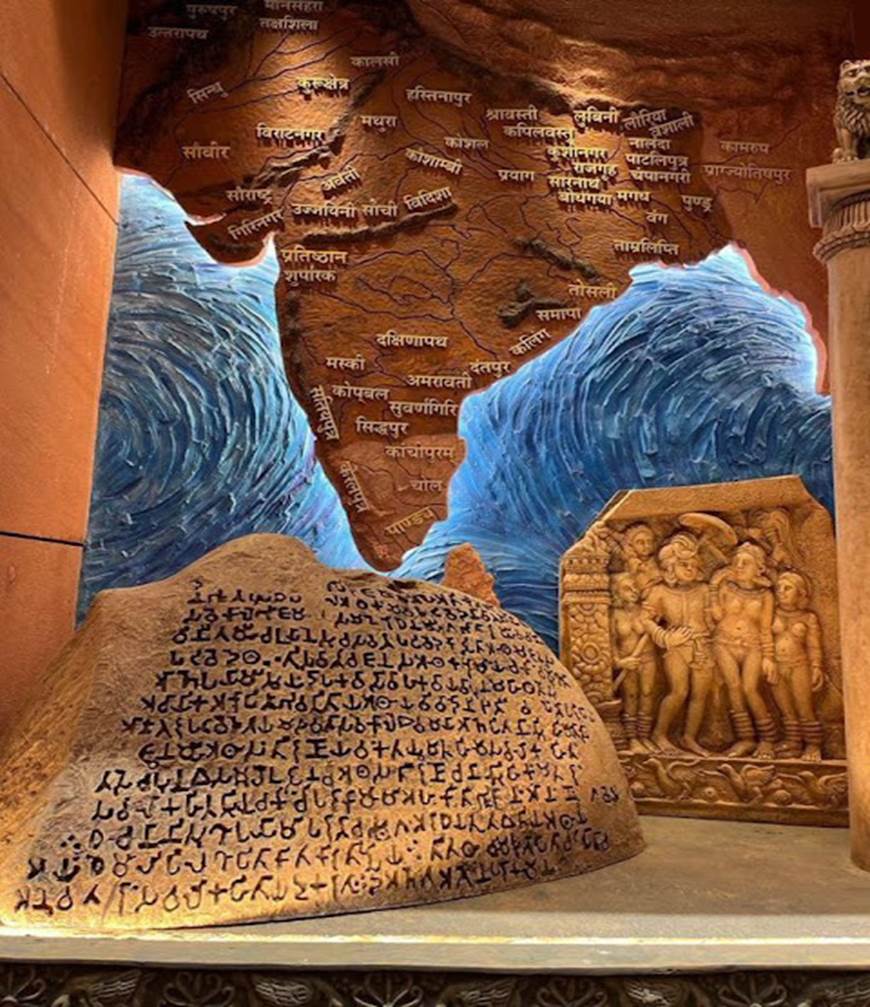
Akhand Bharat Mural in Indian Parliament - Source: Pralhad Joshi
Is the West Unwittingly Helping Modi Realize His Akhand Bharat Hindutva Dream?
By Riaz Haq
CA

Indian Prime Minister Narendra Modi has recently opened a new parliament building in New Delhi. Prominently displayed in this new building is a provocative map of "Akhand Bharat" (Greater India) that includes neighboring nations of Nepal, Bhutan, Pakistan, Bangladesh and Sri Lanka as part of India.
After the inauguration, Modi's parliamentary affairs minister Pralhad Joshi tweeted a picture of the mural and wrote: “The resolve is clear – Akhand Bharat.” Akhand Bharat is part of the Fascist Hindutva ideology of Modi's party.
In the last two months since this chauvinistic display, the tight embrace and arming of Modi by the West is raising fears of destabilizing of South Asia. Pakistani officials have recently talked about a revision of the country's "full-spectrum" nuclear doctrine with the addition of "zero-range" nuclear weapons as a deterrent against Western-armed Hindutva-fueled aggression.
Akhand Bharat
Earlier this year, Prime Minister Modi's ideological leader chief Mohan Bhagwat, the head of the right-wing Hindu organization Rashtriya Swayamsevak Sangh (RSS), said ‘Akhand Bharat’ was an undisputed truth and a divided Bharat was a nightmare.
Now the Akhand Bharat mural and its justification by an Indian minister have drawn condemnation from Bangladesh, Nepal and Pakistan. “The gratuitous assertion of ‘ Akhand Bharat ’ is a manifestation of a revisionist and expansionist mindset that seeks to subjugate the identity and culture of not only India’s neighboring countries but also its own religious minorities,” said Pakistani Foreign Office Spokesperson Mumtaz Zahra Baloch.
Western Arms Deals
Large arms deals have been announced during Prime Minister Modi 's recent visits to Washington and Paris. New weapons acquisitions range from modern fighter jets to submarines. India is already the world's largest arms importer. India's defense budget ($81 billion) is the fourth largest in the world, according to the Stockholm-based think tank SIPRI . Coming soon after the unveiling of the Akhand Bharat mural, these new modern lethal weapons' purchases by New Delhi are seen as a serious threat by India's neighbors.
America's Bad Bet
While the Western nations are seeking an alliance with India to counter rising China, the Hindutva leadership of India has no intention of confronting China. In a piece titled “America’s Bad Bet on India”, Indian-American analyst Ashley Tellis noted that the Biden administration had “overlooked India’s democratic erosion and its unhelpful foreign policy choices” in the hopes that the US can “solicit” New Delhi’s “contributions toward coalition defense”.
Earlier this year, India's External Affairs Minister S Jaishankar confirmed New Delhi's unwillingness to confront China in an interview: “Look they (China) are a bigger economy. What am I going to do? As a smaller economy, I am going to pick up a fight with bigger economy? It is not a question of being a reactionary; it is a question of common sense.”
Modi's India is driven much more by a desire to bring back what the right-wing Hindus see as the "glory days" of India through "Hindu Raj" of the entire South Asia region, including Pakistan. The arms and technology being given to Modi will more likely be used against India's smaller neighbors, not against China.
Pakistan's Likely Response
General Khalid Kidwai, Advisor to Pakistan’s National Command Authority and pioneer Director General of Pakistan’s Strategic Plans Division, has warned about the ‘toxic mix of poisonous ideology’ posing a serious threat to strategic stability in South Asia. “I have no hesitation in stating that minimum Pakistani counter measures would be put in place if a reckless imbalance is induced in South Asia, it is not a warning, it's a contingency foreseen,” General Kidwai added, according to Pakistani media reports.
In May this year, retired Lt Gen Khalid Kidwai provided new details of Pakistan’s nuclear doctrine. He has talked about " zero range " nuclear weapons. Prior to this, the officially acknowledged the lowest range in Pakistan’s nuclear inventory was the Nasr, or Hatf-9 ballistic missile, with a range of 60 kilometers (about 37 miles). Most significant was his statement that “vertically the spectrum encapsulates adequate range coverage from 0 meters to 2,750 kilometers [about 1,700 miles] as well as nuclear weapons destructive yields at three tiers — strategic, operational, and tactical.” Talking about "zero range" weapons, analyst Sitara Noor explained it as follows in a recent article that appeared in Foreign Policy magazine :
"Talk of zero-range weapons suggests that Pakistan is either going to develop artillery shells as the United States, Soviet Union, and United Kingdom did during the Cold War—raising questions of whether it is going to be an M28/M29 Davy Crockett-style recoilless rifle system, the smallest weapon in the US nuclear arsenal, developed during the 1950s as a front-line weapon with yields as low as a fraction of a kiloton—or it could be a hint that Pakistan could possibly lay nuclear land mines across the India-Pakistan border to deter Indian advances. Observers, especially in India, are left wondering whether this statement is based on some existing scientific research and design testing and necessary doctrinal thought process. Kidwai’s statement does not provide any such details, and in the spirit of ambiguity that Pakistan seems to have benefited from, there is unlikely to be a follow-up soon to clear the air".
Summary
(Riaz Haq is a Silicon Valley-based Pakistani-American analyst and writer. He blogs at www.riazhaq.com )

